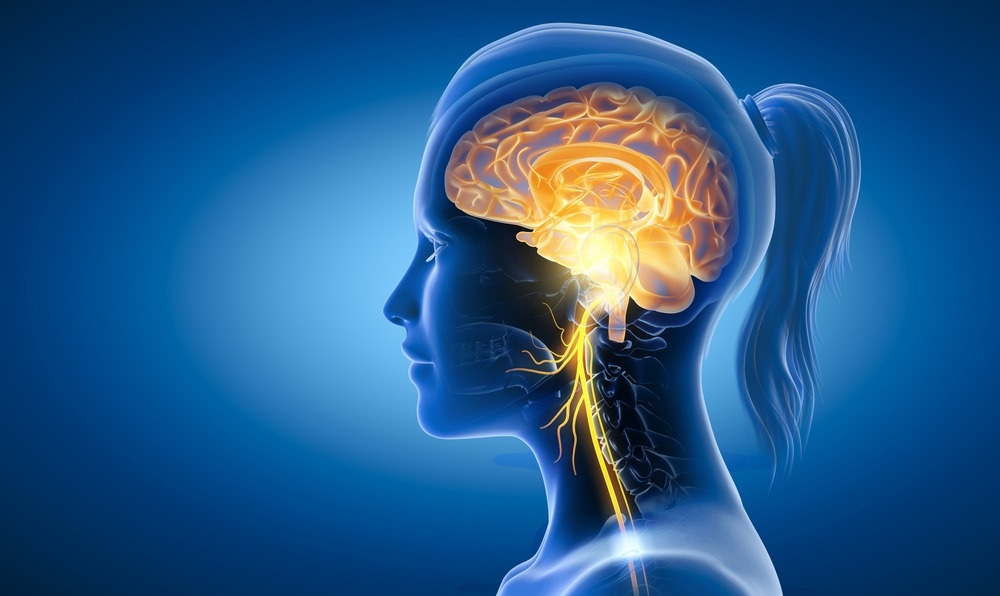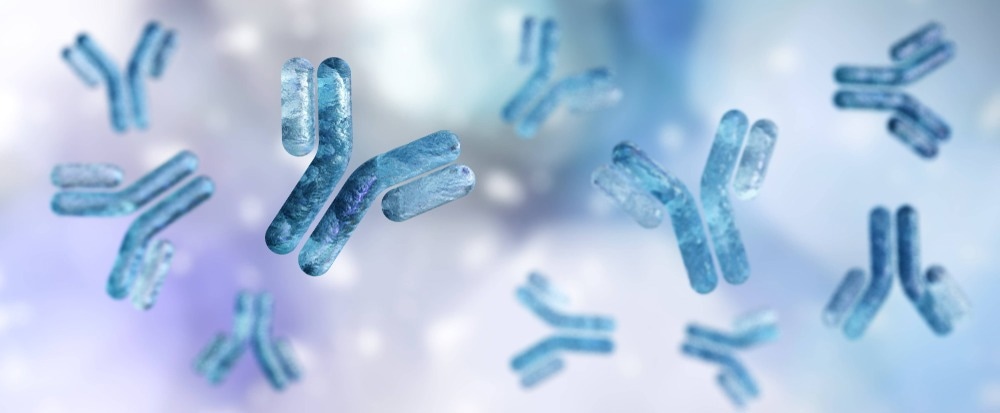By Syed S. A.Reviewed by Danielle Ellis, B.Sc.
Causes and symptoms
Case report
Diagnosis and treatment
References
Further reading
Opsoclonus-myoclonus syndrome (OMS) is a rare neuroimmunological disorder in children and adults. Symptoms include rapid multidirectional conjugate eye movements (opsoclonus), myoclonus, tremors, encephalopathy, and cerebellar ataxia. Behavioral changes in adults and irritability in children are also common.

Image Credit: Axel_Kock/Shutterstock.com
On the basis of paraneoplastic or infectious etiologies, the pathophysiology is assumed to be immunological. Immunomodulatory therapy should be used, even if the response is insufficient.
M. Kinsbourne first identified six infants in 1962 who had a neurological disorder called myoclonic encephalopathy, which was later renamed dancing eye syndrome and is now known as OMS.
Causes and symptoms
OMS can occur due to a variety of reasons, including paraneoplastic, parainfectious, toxic-metabolic, and idiopathic causes. Humoral and cell-mediated immune systems have both been implicated. Several cell surface autoantibodies, including antibodies against Ri (ANNA-2), Hu (ANNA-1), Yo (PCA-1), Ma1, and Ma2, have been linked to paraneoplastic OMS. Others involved include the N-methylD-aspartate (NMDA) receptor, amphiphysin, CRMP-5/anti-CV2, Zic2, and neurofilaments.
In addition to autoantibodies against neuronal tissues in patients with OMS, other evidence for an autoimmune process includes the presence of B-cell activating factor (BAFF). This is a key molecule involved in B-cell survival, in the patient's serum and cerebrospinal fluid, and increased B-cell-related cytokines in the blood and lymphocytes infiltrating the tumors.

Image Credit: ustas7777777/Shutterstock.com
Involuntary, oscillating eye movements (opsoclonus), multifocal muscle jerks (myoclonus), and severe ataxia are all symptoms of the condition. Furthermore, neuropsychological abnormalities are observed. In the acute stage, ataxia can cause an inability to walk due to both trunk and limb ataxia. Although opsoclonus and myoclonus are the most noticeable symptoms, they may not always be present.
Other frequent symptoms include encephalopathy, limb myoclonus, neuroblastoma, and sleep disturbance. Occasionally, breast cancer, chronic infection, melanoma, neoplasm of the lung, and ovarian teratoma can also be observed. These symptoms may vary from person to person. Some people may experience more symptoms than others, and the severity of symptoms can range from moderate to severe.
Both children and adults can get OMS. The condition affects the majority of children within the first three years of life. Neuroblastoma is present in around 50% of children, and OMS develops as a paraneoplastic neurological disease. Similarly, OMS is found in 1-2 percent of neuroblastomas. Children with OMS are irritable, have severe learning difficulties, and may develop mental impairment. Adult OMS can also manifest as a paraneoplastic illness, most commonly in conjunction with small-cell lung or breast cancer. However, at least half of the cases appear to be idiopathic or parainfectious.
Case report
Adhikari et al. present and analyze a difficult case of OMS that began six weeks after birth. For two weeks, a 26-year-old female reported worsening bilateral hand tremors, intermittent myoclonus, ataxia, vertigo, and opsoclonus; these symptoms began six weeks following her third healthy child's easy delivery. Obstetric history was noteworthy for four pregnancies with three live deliveries and one miscarriage, G4P3L3. She had no history of serious medical issues, such as autoimmune illnesses. The younger sister has Ehlers-Danlos syndrome, and her maternal grandma has unidentified skin cancer.
An initial physical examination indicated opsoclonus, action tremor, and severe truncal ataxia that necessitated the assistance of two people during ambulation. Routine lab testing came back negative. Extensive cancer screening came back negative. The patient was initiated on intravenous methylprednisolone followed by intravenous immunoglobulins (IVIG) with remarkable improvement for the tentative diagnosis of idiopathic autoimmune OMS. In 4 months, the symptoms returned (roughly 6 weeks into the IVIG course). Additional testing revealed a new enhancing lesion on the MRI brain, positive MOG-IgG, and CSF free of oligoclonal bands. With better outcomes, she was switched to maintenance IVIG and then to rituximab. Her exam was better at the two-year mark, with no objective evidence of aberrant movement or opsoclonus on maintenance Rituximab infusions of 1,000 mg every six months.
They propose that the immune response, in this case, was triggered by immunological alterations during pregnancy and the postpartum period, presumably as a result of fetal tissue exposure (fetal microchimerism). The presence of the MOG antibody suggests that OMS is another clinical manifestation of MOG-associated illness (MOG-AD), which is substantiated in our instance by MOG-AD-specific CSF and radiographic findings.
Diagnosis and treatment
There is no diagnostic test, brain imaging is normal, and other tests provide inconclusive results. The clinical diagnosis is based on the major signs and symptoms. The disease can progress in a monophasic or chronic relapsing pattern, and children are frequently left with long-term physical, behavioral, and cognitive consequences.

Image Credit: Gorodenkoff/Shutterstock.com
Both corticosteroids and adrenocorticotropic hormone (ACTH) are regarded as "gold standard" therapy. IVIG (intravenous immunoglobulin) is known to regulate immunological responses in many autoimmune disorders, and reports of clinical responseiveness to this drug in individuals with OMS are rising. The combination of corticosteroids or ACTH and IVIG is currently described as a typical therapeutic choice for OMS. Patients resistant to IVIG or corticosteroid monotherapy may benefit from further immunotherapy and plasma exchange. Cancer-specific treatments such as surgery, chemotherapy, and radiation are successful in individuals with cancer-associated OMS, either alone or in conjunction with other immunotherapies.
Although immunotherapy achieves complete remission in the majority of patients with OMS, identifying the exact immunological processes involved is required, which could lead to improved outcomes and a better knowledge of how immune mechanisms affect neuronal function.
References
- Adhikari, S., Thuringer, A., Maali, L., & Jassam, Y. (2021). Opsoclonus myoclonus syndrome in a postpartum period. Multiple sclerosis and related disorders, 50, 102862. https://doi.org/10.1016/j.msard.2021.102862
- 2. Oh, S. Y., Kim, J. S., & Dieterich, M. (2019). Update on opsoclonus-myoclonus syndrome in adults. Journal of neurology, 266(6), 1541–1548. https://doi.org/10.1007/s00415-018-9138-7
- 3. Blaes, F., & Dharmalingam, B. (2016). Childhood opsoclonus-myoclonus syndrome: diagnosis and treatment. Expert review of neurotherapeutics, 16(6), 641–648. https://doi.org/10.1080/14737175.2016.1176914
- 4. Pike M. (2013). Opsoclonus-myoclonus syndrome. Handbook of clinical neurology, 112, 1209–1211. https://doi.org/10.1016/B978-0-444-52910-7.00042-8
- 5. Hero, B., & Schleiermacher, G. (2013). Update on pediatric opsoclonus myoclonus syndrome. Neuropediatrics, 44(6), 324–329. https://doi.org/10.1055/s-0033-1358604